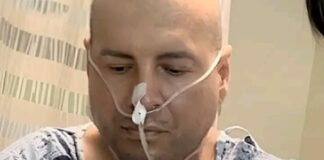Long before the first reporter arrived and long before the sirens drowned out the city’s usual hum, something felt wrong in the air around downtown Washington. People described an uneasiness, a strange tightening of atmosphere, as if the streets themselves were bracing for a
blow no one could see coming. Unmarked vehicles had been spotted circling earlier in the day, their windows dark and their routes unusual. A pair of pedestrians swore they heard what sounded like coded radio chatter near 17th Street—too deliberate, too hurried to be casual. And then, as if triggered by an unseen signal, the crack of gunfire shattered the tension, confirming every quiet suspicion that something had been set into motion long before the public realized it.

A sharp burst of gunfire tore across downtown Washington, D.C., shattering the fragile sense of calm that usually hangs over the city. In an instant, two National Guard personnel—fully equipped, alert, and stationed on routine duty—became the unsuspecting targets of a brazen
attack just a short distance from the White House gates. Sirens wailed through the streets, urgent and unrelenting. A helicopter swept low overhead. Within moments, entire blocks were sealed off as authorities raced to piece together a motive and regain command of a rapidly
spiraling situation. Yet despite the flurry of official movement, real answers remained stubbornly out of reach.
What started as an ordinary afternoon at the intersection of 17th and I Street NW quickly devolved into a haunting tableau that left the nation transfixed. An area known for its constant flow of commuters, government staff, and curious visitors suddenly transformed into a tightly controlled security zone. Armored vehicles surged in. Tactical teams converged. Witnesses watched in stunned silence as a lone “person of interest” was escorted from the area, offering no clues and no expression. Meanwhile, the fallen soldiers—symbols of stability and authority—were hurried into ambulances, their conditions unconfirmed, their identities protected, and their loved ones likely finding out through the same relentless news flashes as everyone else.
This attack does more than disrupt the expectation of safety surrounding the White House; it forces the nation to confront how thin that expectation truly is. If uniformed Guardsmen can be struck down in daylight, mere blocks from the heart of American power, then the idea of guaranteed security becomes a question rather than a promise. While investigators sift through evidence and officials prepare careful, measured statements, the public is left poised in an uneasy quiet—watching, refreshing news feeds, and wondering whether this shocking eruption of violence is a tragic anomaly or a warning sign of deeper fractures yet to be exposed.
Conclusion
In the aftermath of the shooting, Washington stands suspended between fear and revelation, piecing together fragments of a night that should never have unfolded so close to the nation’s most fortified address. Investigators continue to sift through evidence, chasing leads that seem to multiply with every hour, while officials work to reassure a public that no longer trusts calm headlines or polished statements. The image of wounded Guardsmen being rushed away has already become a symbol—one that raises unsettling questions about security, preparedness, and the unseen forces that may have orchestrated the chaos. As the city waits for answers, one truth has become impossible to ignore: whatever happened at that intersection was not random, and until the full story emerges, a quiet, uneasy shadow will linger over the heart of the capital.
Please SHARE this article with your family and friends on Facebook.
Bored Daddy
Love and Peace


































